The cutting tools of Mentawai people living in the forests are adzes, axes, machetes, and one specialized knife. All these tools have a solid historical background and are still used today. During my stay with a Mentawai family in December 2023, no motor chain saws, or any other saws, were used or known by them. They just used the cutting tools as shown here.
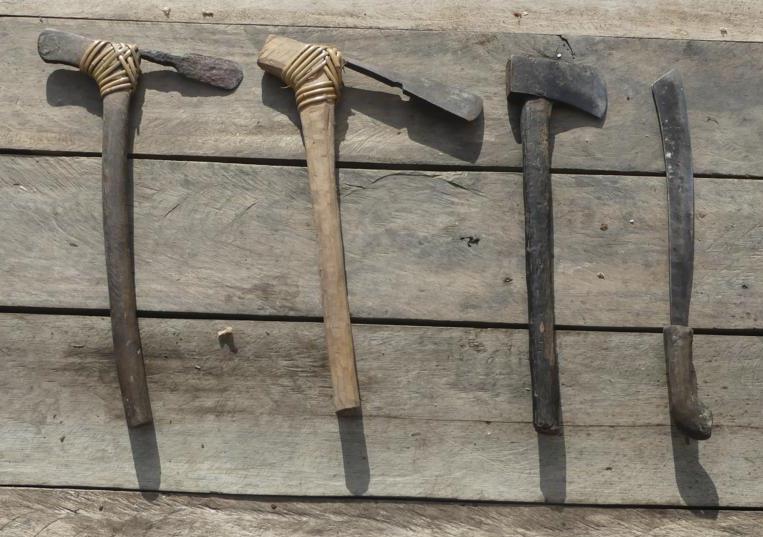
Axes
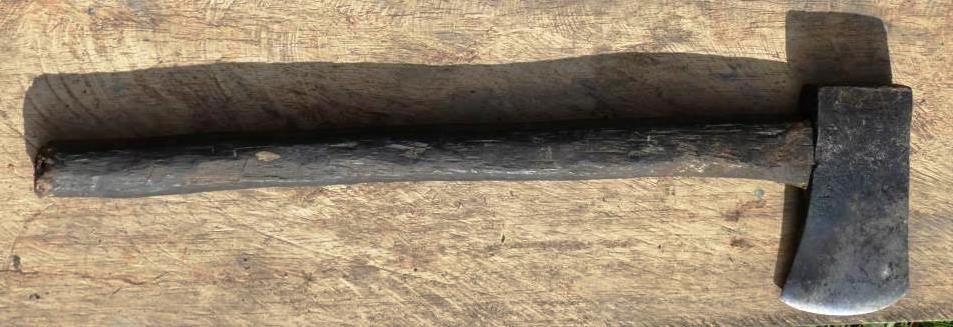
Mentawai people mainly use axes for felling sago palms. However, occasionally, it is necessary to harvest a sugar palm for its wood for bows or implements.
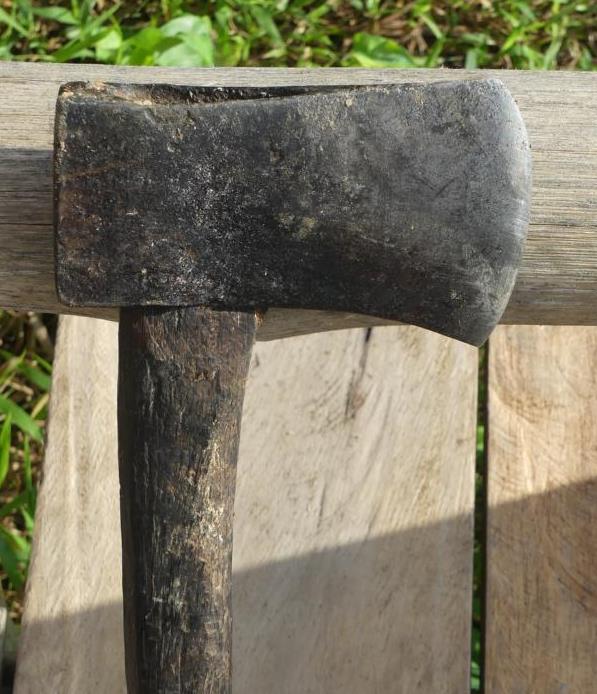
Again, the handle was carved from Arenga pinnata wood. And this axe was so old that nobody at the uma could remember when the steelhead was bought or how long the handle lasted.
Combined Adze and Axe
The cutting edge is parallel to the handle at an axe, whereas, at an adze, the cutting edge is perpendicular to the handle. At least, that is the theory. Because the blades of traditional adzes in Southeast Asia and the Pacific Islands can be removed and easily fitted to the handle at every angle. Therefore, adzes are also used at any angle that fits the bearer for chopping in specific situations. The traditional definition, as described above, is therefore not always correct.
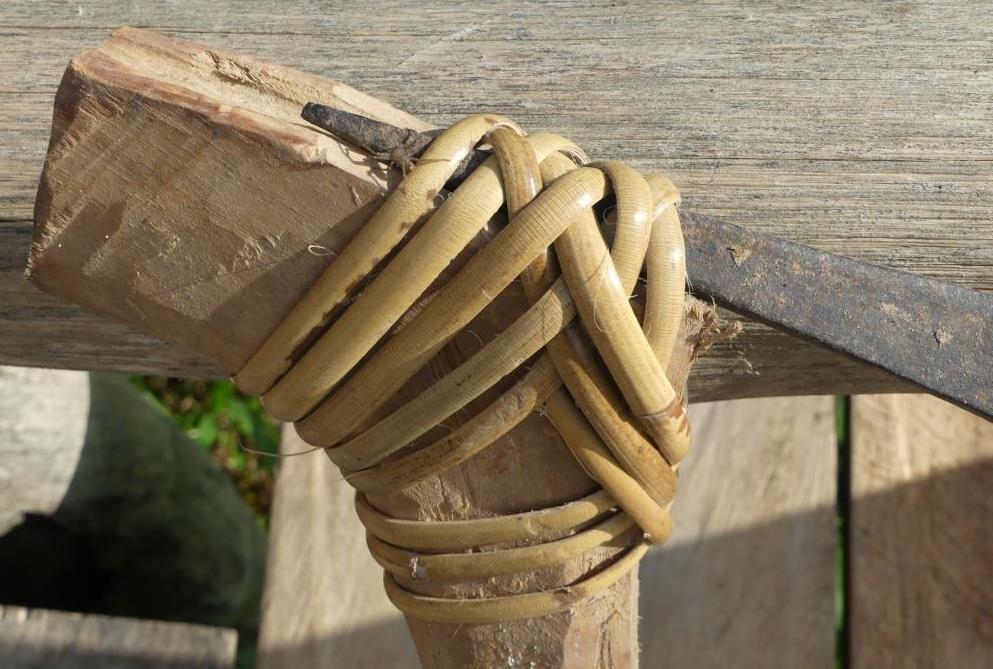

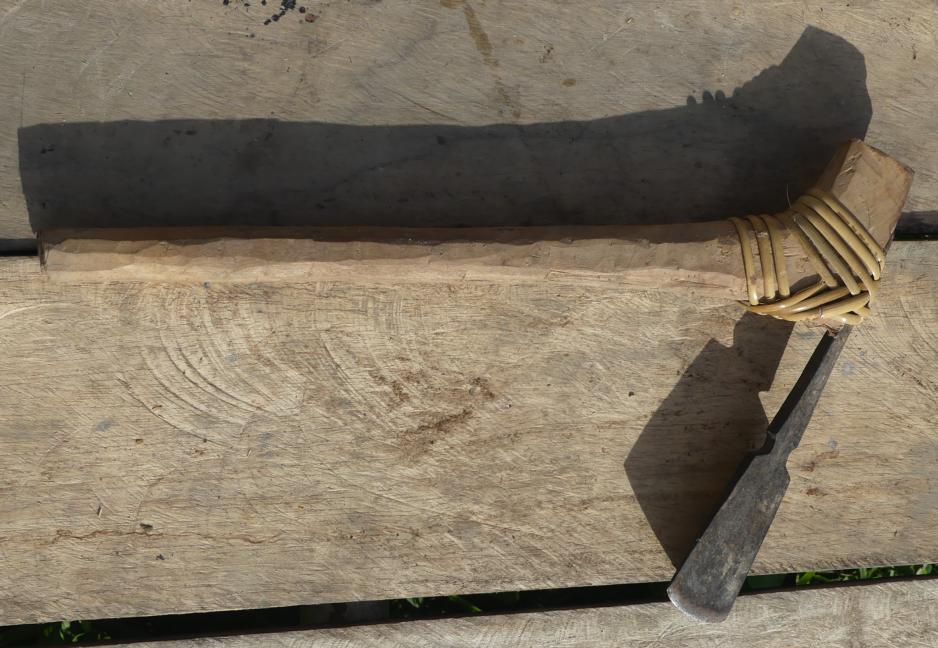
Modern adze. The blade was bought from a dealer in Muara Siberut village. The handle was made from an unidentified light wood species, had a straight shape, and was crudely carved. Rattan binding was the same as on the ancient adze. It was the same rattan species (Calamus javensis) used for sewing palm leaf panels or snares for catching chicken.
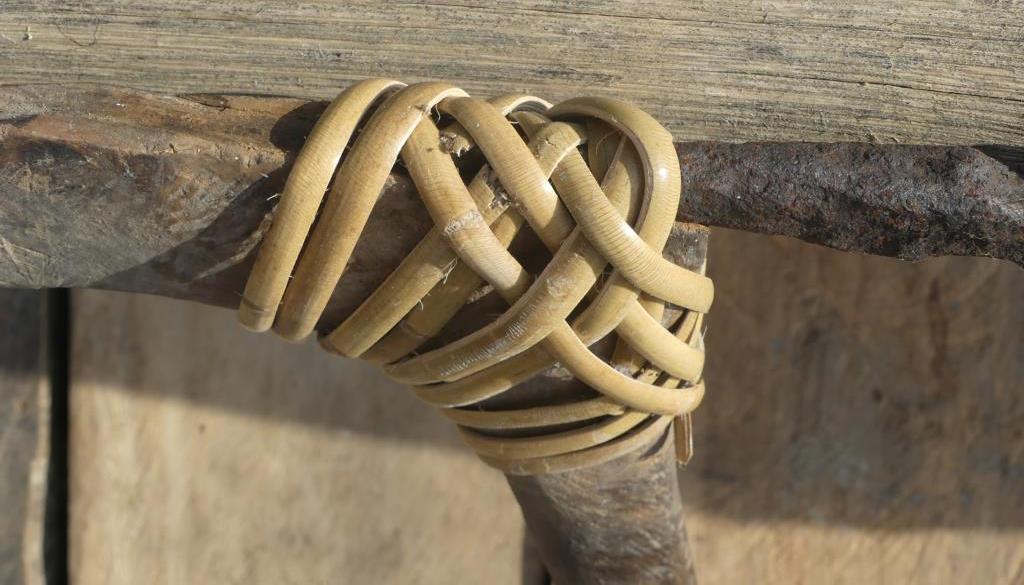
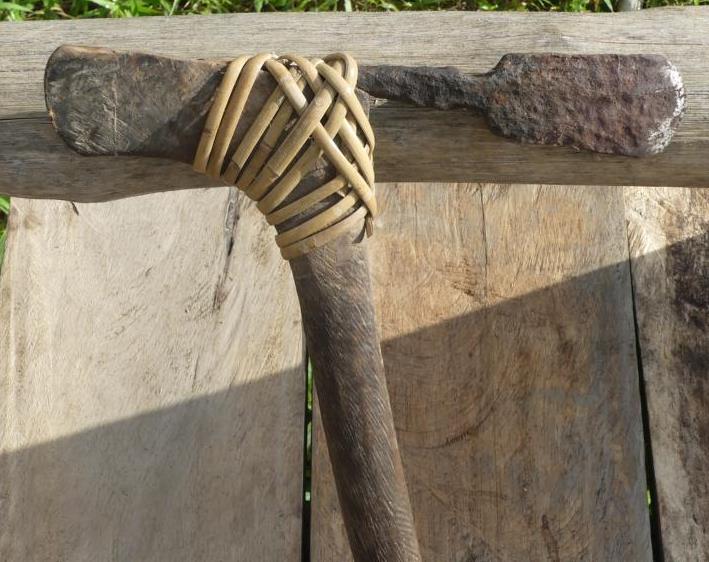
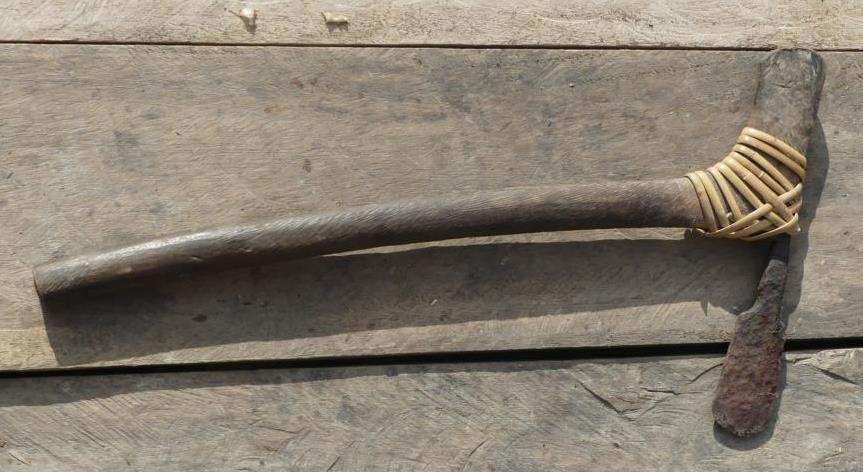
Ancient adze, which is still in use today. The handle was made from sugar palm (Arenga pinnata) wood and is slightly curved and smoothly carved. This old adze was greatly preferred for use by Aman Aru.
In general, adzes are used by Mentawai people for light chopping work. Like cutting small trees or liana stems. Or for the debarking of sago palms. But also for construction work of shelters or the uma. There are more examples of its application for traditional adzing work, like chopping and carving flat bowls or trowels. Still, the adze is generally used for cutting or chopping work, which would be too heavy for the machete and too light for an axe.
Machetes
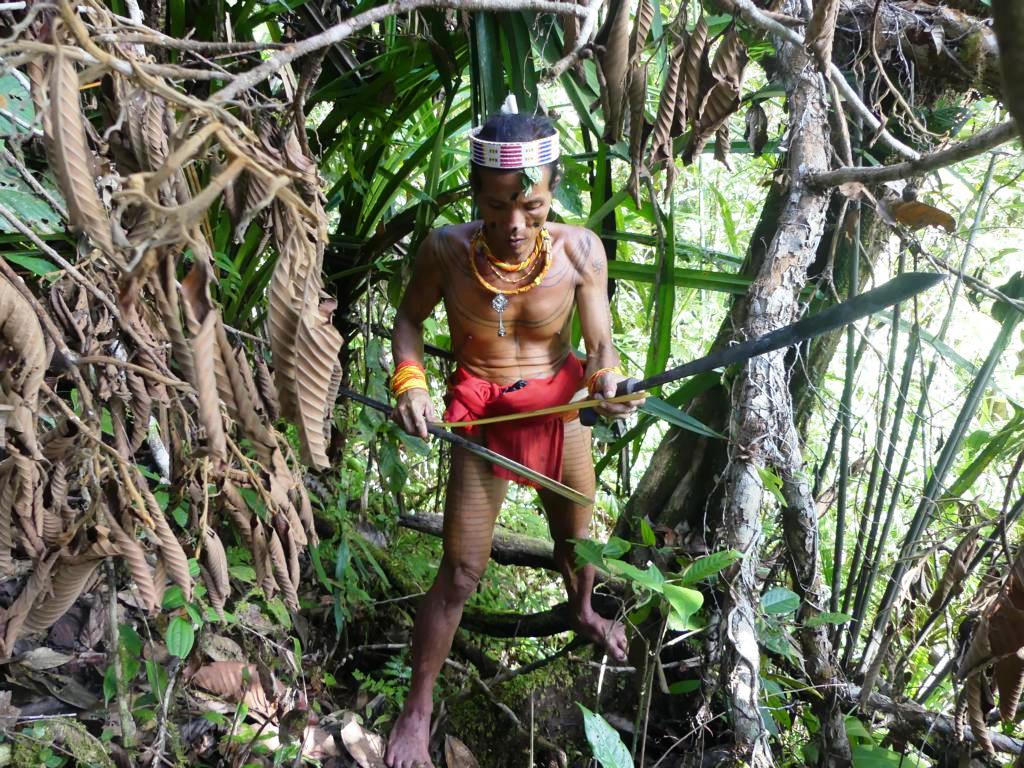
Machetes are called ‘Parang’ or ‘Golok’ in Bahasa Indonesia. Parangs are longer than Golok’s and are used as standard cutting tools by the Mentawai. A typical parang can be seen in the picture above. Such a blade is typically between 54 and 61cm / 21 and 24 inches long.
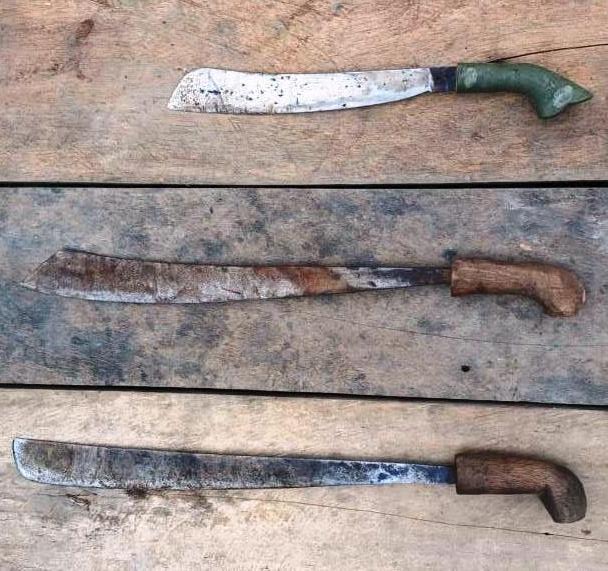
Picture of a Golok above and two Mentawai Parangs below. The Golok had a blade length of 36cm / 14’’. The blades for the Parangs were bought from a dealer, and Mentawais crafted the handles.

The blade thickness of the Golok was 3mm (1/8’’), and the Parangs hat had a 4mm (5/32’’) thick blade, which tapered down to 3mm (1/8’’) at the tip.
Commercially available parang blades

A bunch of Parang blades at a shop in Muara Siberut village. This shop sold everything from motorcycle gas to cigarettes and bags of rice. The shape of these blades is not typical for parangs of Mentawais but for agricultural use. Mentawai parangs typically show a pointed, tapered (convex) front tip. Such a taper prevents the parang from getting stuck in Greenwood. As shown above, these agricultural blades easily cut banana trunks and similar greeneries, and the pointed tip on the ridge is suitable for weeding and removing vines.

Typical Mentawai parang for day-to-day use in the forest.

This was my machete (Golok), which our Mentawais regarded as a tool for females in the kitchen and garden but not for males in the forests. According to them, it was too short for forest use to cut the dense vegetation. Its significant advantages were its molded soft plastic grip, which prevented blistering, and its rust-resistant steel originating from truck spring plates. I liked its handy size, especially when slithering along the soggy rainforest floor or balancing on palm trunks over deep gulleys. At the end of my stay with the Mentawai family, I gave it to the lady of the house, who was highly delighted.
Specialized cutting tools
From Mentawais, only one specialized cutting tool type is known. It is the so-called Palitai.
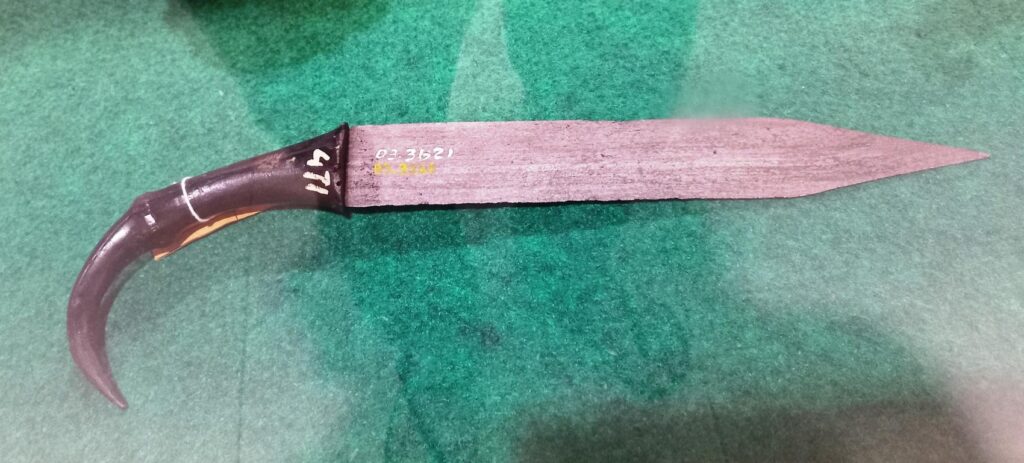
The blade length of this knife is between 30-70cm / 1 ft – 2 ft 3’’, and the handle is always crocked or decorated decoratively. The blade has parallel double edges, a ridge in the middle, and ends in a pointed tip. Also, the sheath shows this typical parallel design and pointed tip. Palitai’s were, in former times, a sign of high social status. Until the end of the 19th century, when Mentawais were still headhunters, Palitai knives were used for stabbing their victims. Nowadays, they are only used to kill pigs by stabbing their necks.
Lessons learned about cutting tools of Mentawais:
- Mentawais use axes, adzes, machetes, and a specialized knife as cutting- and chopping tools.
- Axes are primarily used for felling sago palms.
- Adzes have a variety of purposes for cutting and carving.
- Machetes are the preferred universal cutting tools for various tasks in the garden and forest.
- Palitai knives are getting out of fashion, as their use was mainly focused on stabbing head-hunting victims.
.




